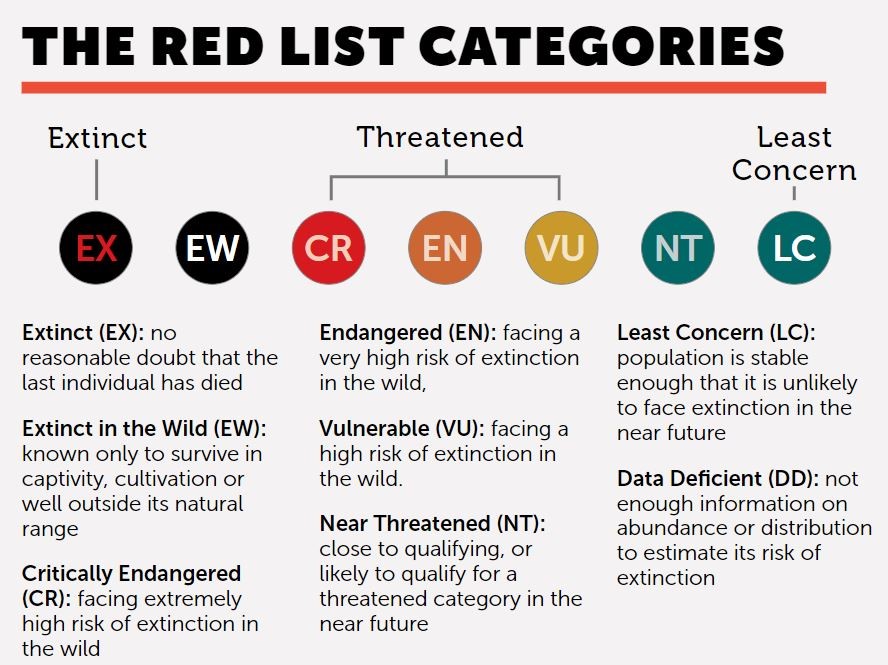10th May 2020 Current Affairs in English

10th May 2020 Current Affairs in English – Today Current affairs PDF link available below.
Dear Aspirants, we (Vetripadi.com team) have come with Daily Current affairs analysis. It is prepared to crack the various competitive exams. We are here to make sure your preparation easy. We will update the current affairs every day. It will help for both preliminary and mains (facts oriented with background information) for your preparation. We need you support.
VETRIPADI Daily Newsletter
வெற்றிப்படி.காம் | வெற்றிக்கு நீ படி!!!
Daily Current affairs for Competitive
Exams ( UPSC, TNPSC, SSC)
10th MAY 2020
TABLE OF CONTENTS
- Sal forest tortoise habitat stretches over unprotected areas
- COVID-19 testing kit developed by researchers in West Bengal gets ICMR nod
- Using NFHS for population surveillance for coronavirus
- Sisi signs off new emergency powers for security forces
- ICMR, Bharat Biotech tie up for Indian vaccine
- Rangarajan panel to study COVID-19 impact
- EU agrees first part of coronavirus economic rescue, but job not done yet
- Other News
1. Sal forest tortoise habitat stretches over unprotected areas
Information in News
- The sal forest tortoise is widely distributed over eastern and northern India and Southeast Asia.
- In fact, 23 of the 29 species of freshwater turtle and tortoise species found in India come under the threatened category in the IUCN red list and are under severe existential threat due to human activities.
- The elongated tortoise (Indotestudo elongata), the sal forest tortoise, recently assessed as critically endangered, is heavily hunted for food.
- It is collected both for local use, such as decorative masks, and international wildlife trade.
- 29% of the predicted distribution of the species falls within high occurrence fire zones or areas where there is management burning.
- Especially in northeast India, which is a suitable habitat for the species, they experience jhum fire. Such an intervention may not only directly kill the animals but also open up habitats, which, in turn, increases the chance of people finding the tortoise easily.
- Forest fires also perturb soil moisture which may impact forest floor thus changing the whole community on which the reptiles depend.
- According to the IUCN the population of the species may have fallen by about 80% in the last three generations (90 years).
- The critically endangered brackish water turtle (Batagur baska) distributed in India and Bangladesh.
- The population sizes of the sal forest tortoise, or any such species, mainly because they are so rare, live in remote areas of the forest and funding opportunities to study them are few. Species having large distribution may suffer myriad problems.
- Protected areas are designated in a largely mammal-centric way. Many reptiles and amphibians which are equally threatened live outside protected areas where exploitation risk is more.
- The “Tiger Conservation Unit” and trans boundary conservation reserves such as Manas for the Indo-Bhutan region, the Sundarban for the India-Bangladesh region.

2. COVID-19 testing kit developed by researchers in West Bengal gets ICMR nod
Information in News
- The kit ‘DiAGSure nCOV-19 Detection Assay’ is priced around ₹500
- A low-priced COVID-19 testing kit designed by a group of researchers in West Bengal has received the approval of ICMR, and would soon be employed to examine samples.
- The device has demonstrated a near-100% accuracy in detecting the virus in a short span of 90 minutes.
- Developed indigenously, one kit can test up to 160 patients.
- The equipment was then developed by GCC Biotech (India) Private Ltd, a company based in Bakrahat, South 24 Parganas, following rigorous clinical trials.
3. Using NFHS for population surveillance for coronavirus
Information in News
- A comment recently published in Lancet Global Health proposes the use of the Demographic and Health Survey (DHS) framework to ascertain the prevalence of COVID-19.
- The scientific and logistical infrastructure of India’s National Family Health Survey (NFHS) be leveraged to conduct a random sample-based population surveillance to track coronavirus.
Present Methods
- Testing for coronavirus (COVID-19) in high-risk individuals, such as those with symptoms, close contacts of those tested positive, health-care professionals and those with travel history to an affected region. But this does not give an accurate number of those affected, making it impossible to understand the true prevalence in a population.
Early Study Reveals
- India used NFHS for HIV surveillance. India was projected to have 25 million HIV-positive individuals, with a 3-4% prevalence in adults, but when a random-sample-basedpopulation surveillance was conducted to test for HIV in the general population, the estimates sharply reduced to 2·5 million, with a 0.28% prevalence in adults.
Significance of DHS and India’s NFHS
- Layering a COVID-19-focused data-collection effort on to the NFHS infrastructure would keep operational costs low, with the major expense being laboratory costs for testing samples.
- India and about 90 countries with established DHS sampling frames can implement this surveillance system.
- The idea is that population-based testing is important for any decision making with some repeated cross-sectional testing of the same.
- The Government of India is considering a random-sample based sero-prevalence survey.
- Recommend that the latest NFHS district-sampling frame be used and not invent a new one.
- Indeed, one needs to be cognizant of the availability of the testing kits and other logistical matters related to the testing itself.
4. Sisi signs off new emergency powers for security forces
Information in News
- Human Rights Watch warns the ‘health emergency’ changes may be cover for new repressive measures.
- Egypt’s President Abdel Fattah el-Sisi ratified law no. 22/2022, controversial amendments to the emergency law giving himself and the armed forces additional powers to combat the coronavirus pandemic.
State of Emergency
- Egypt has been under a state of emergency for most of the past four decades, intervals between 2012 and 2017.
- The law gives security agencies extensive powers to detain suspects and seize property without judicial review.
- It empowers the president to take new measures designed to deal with “health emergencies” as the country battles the coronavirus pandemic.
- The new amendments grant the armed forces law-enforcement powers, including arrests and investigations into crimes.
Cover’ for repression
- The president, per the new decree, will be authorised to order the military prosecution to conduct preliminary investigations into offences deemed a violation of the emergency law.
- Suspending school and university years, shutting down public- and private-sector entities entirely or partially, postponing payment of bills and compelling Egyptian returnees from abroad to undergo quarantine upon their arrival home.
- It also includes restricting different forms of public and private gatherings, banning the export of certain goods and turning schools and youth centres into hospitals.
- In response to the new decree, Human Rights Watch warned that the amendments amounted to a “cover for new repressive powers” and “could curb rights in the name of ‘public order'”.
- Only five of the 18 proposed amendments are clearly tied to public health developments.
Making them part of the emergency law means that the authorities can enforce the measures whenever a state of emergency is declared, regardless of whether there is a public health emergency,” the New York-based organization.

5. ICMR, Bharat Biotech tie up for Indian vaccine
Information in News
- The Indian Council for Medical Research (ICMR) announced a research collaboration with Hyderabad-based Bharat Biotech International Ltd (BBIL) to develop a COVID-19 vaccine.
- ICMR had transferred the virus strain isolated at the National Institute of Virology, Pune (an ICMR institute) to BBIL.
- It will provide continuous support to BBIL for vaccine development.
- ICMR and BBIL will seek fast-track approvals to expedite vaccine development, subsequent animal studies and clinical evaluation of the candidate vaccine, which will be fully indigenous to India.
- The Department of Biotechnology had announced funding support to the company to develop a vaccine candidate utilising the inactivated rabies vector platform.
- The company had said it was working on ‘CoroFlu’ a one-drop COVID-19 nasal vaccine built on a flu vaccine “backbone” that had proven to be safe in humans.
6. Rangarajan panel to study COVID-19 impact
Information in News
- Tamil Nadu has constituted a high-level committee under the Chairmanship of former Governor of Reserve Bank of India, C Rangarajan, to advise the government on medium term response post Covid lockdown period.
- Rangarajan, who is presently the Chairman of the Madras School of Economics, had also headed the Prime Minister’s Economic Advisory Council under Manmohan Singh earlier.
- State Finance Secretary S Krishnan will be the coordinator of the 24-member committee.
Committee Works
- The committee will also assess the impact of the crisis on the State government’s fiscal situation and way forward to improve the fiscal position, including increasing the tax-GDP ratio and diversifying revenue sources and re-prioritising expenditure.
- It will also look at fiscal issues and economy promotion measures the State government should take up with the Centre for necessary action.
- It will also identify possible sources of financing and funding for different sectors, including infrastructure projects, small businesses and other enterprises.
- The committee will submit its final reports to the Government within three months and in the interim submit reports as it deems fit and required by the government, the GO said.
7. EU agrees first part of coronavirus economic rescue, but job not done yet
Information in News
- Finance ministers of the 19-nation region signed off on the details of cheap, long-term credit lines that will be made available by the European Stability Mechanism (ESM), the bloc’s rescue fund, to countries that need cash to cover extraordinary health costs caused by the outbreak.
- The ESM, which played a key role in the rescue of Greece, Cyprus, Ireland, Spain and Portugal during last decade’s euro zone debt crisis, will offer credit lines worth 2% of the requesting country’s gross domestic product, and up to 240 billion euros ($260 billion) for the whole region.
- The loans will be made available in the coming weeks, pending procedural approvals, and until the end of 2022.
- It will have a 10-year maturity.
- It will be granted at the very low interest rates enjoyed by the ESM when it issues new debt plus small fees and margins worth around 0.3% of the disbursed amount.
- The ESM is often able to obtain negative rates on its bonds, while Italy is currently paying nearly 2% on its new debt.
- States will be able to spend the borrowed money “to support domestic financing of direct and indirect healthcare, cure and prevention related costs due to the COVID-19 crisis.
- The ESM is only one of the tools EU governments have considered to tackle the economic crisis caused by the pandemic, which is forecast to cause euro zone GDP to shrink by a record 7.7% this year.
- Countries still need to finalise the other two legs of the rescue package worth another 300 billion euros combined: a temporary employment-support scheme and a guarantee fund that would provide liquidity to companies hit by the crisis. Final deals on these tools are expected by the end of the month.
Other News
Information in News
-
Enable longer work hours: CII to Centre
- The Confederation of Indian Industry (CII) has recommended that the Government Issue guidelines directing direct workers to rejoin duty.
- In case workers do not report back, they should be liable for action under the Employment Standing Order Act and Industrial Dispute Act.
-
May 10 is International Mother’s Day.
- All over the world, mothers have mixed feelings.
- According to UNICEF, 24 million babies are expected to be born in India during next year.
some good news for pregnant and lactating mothers:
- Coronavirus infection is less frequent and less severe in children (Child Sparing Pattern).
- During and after pregnancy, a woman is not at increased risk of coronavirus
- COVID-19 does not increase in severity in pregnancy as compared to other people
- Transmission from mother to baby before, during and after birth can happen but it is less common than anticipated
- Most of the breastmilk samples tested for risks have negative results. So most European counties, most international authorities such as WHO, UNICEF, many Indian professional bodies recommend to continue breastfeeding.
3. The Indian Council of Medical Research (ICMR said it will initiate a study in the worst-affected 75 hotspot districts to check for community transmission.
- The ICMR, which was supposed to use the rapid antibody test kits for the survey.
- It will now use the enzyme-linked immunosorbent assay (ELISA) test used in HIV detection for the survey.
4. Yellow Journalism
- Yellow journalism and the yellow press are American terms for journalism and associated newspapers that present little or no legitimate well-researched news while instead using eye-catching headlines for increased sales.
- Techniques may include exaggerations of news events, scandal-mongering, or sensationalism.
- By extension, the term yellow journalism is used today as a pejorative to decry any journalism that treats news in an unprofessional or unethical fashion.
- Yellow journalism, the use of lurid features and sensationalized news in newspaper publishing to attract readers and increase circulation.
- The phrase was coined in the 1890s to describe the tactics employed in the furious competition between two New York City newspapers, the World and the Journal.

